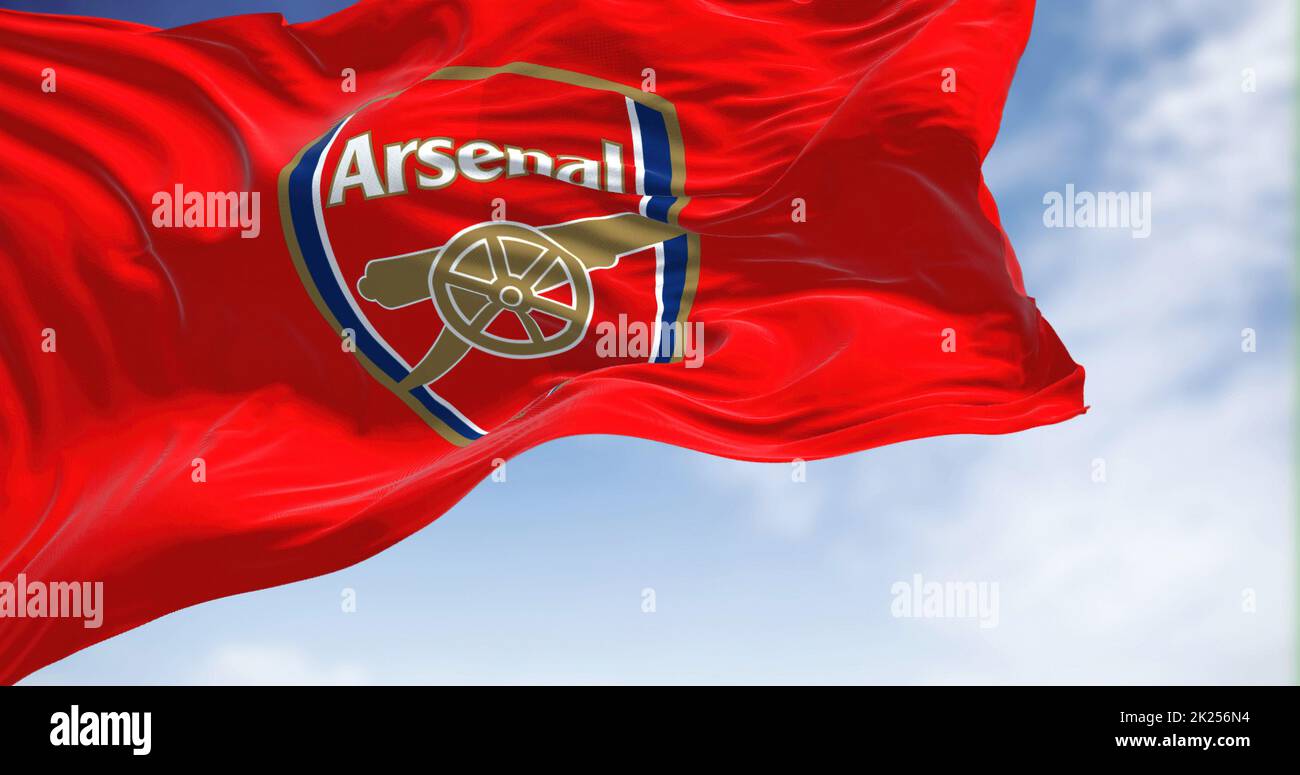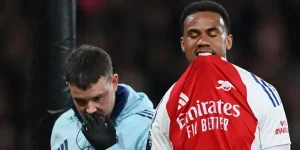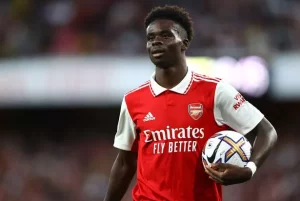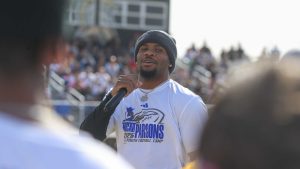
Arsenal’s Teyah Goldie has suffered a second ACL injury after recently recovering, Rob Holding has revealed.
ACL injuries appear to be everywhere in football at the minute with another couple of Premier League players being helped off this weekend in the men’s game with what appeared to be serious knee injuries.

Now, Jonas Eidevall will be without Teyah Goldie who, after recovering from an ACL injury to her left knee, has experienced the same injury in her other
“Jordan Nobbs did hers at the time so we just started our coaching badges together earlier that year. And, yeah, she did hers a week before me,” Holding said.
“So we went to coaching and she was just there like bandaged up, sat there and like we had to do the coaching. She was just there taking notes and then like a week later I did mine.
Then we’re in the gym together on the bike and stuff. So that was that was good, that was a good connection for Arsenal to link the men and the women, both side by side doing the rehab.
“We’ve been doing that for quite a while I feel like. I feel we are one of the best teams at doing that and today I was speaking to Beth Mead, because she’s she’s coming back from hers.
“I mean the the women’s side’s carnage right now.
“Viv, Leah, Teyah’s just done it again. Teyah Goldie’s just done her other leg. She just come back from her left one, she’s done the right one.
“Obviously Beth and then there’s Laura, so there’s five of them there might even be another one that I’m missing, but you know like I mean they’ve got bodies around them.
“At least like all the girls are at the World Cup right now and and they’ve got five of them are all like different stages but I’ve got voices to hear and different different mental stages to bounce off.”
Speaking to Arsenal in May this year, Goldie spoke about her return to the pitch after 14 months out.
“It has been a while but the moment was just as good as I ever imagined to be fair. I’m just buzzing,” the 18-year-old said.
“It’s a hard time for the team but as you can tell, the team are pushing through it and it was incredible to be out there with them.
“As many people will tell you, it’s up and down. But I’ve learnt so much along the way. It’s been a very emotional one but like I say, I’ve learnt so much. I’m in a better place now.
“All the staff have been incredible but I’ve got to shout out Rose [Glendinning]. She was there every step of the way. The girls and the staff made it that little bit easier every day.
“I feel like I’m just getting started, so it’s annoying that the season is ending! But yeah, I actually can’t wait for preseason – just to get going again.”
The rigours of professional football mean that injuries, unfortunately, come with the territory. One of the more dreaded of these injuries is to the Anterior Cruciate Ligament (ACL), a vital stabiliser in the knee. Notably, there seems to be a pattern: footballers who’ve suffered one ACL injury are at heightened risk of a subsequent injury to the other knee.
The ACL is crucial for maintaining stability in the knee during dynamic movements, making it especially vulnerable in sports like football that involve rapid changes in direction. When a player incurs an ACL injury and then undergoes surgery and rehabilitation, several factors come into play that might increase the risk to the other knee.
One significant issue is biomechanical changes. After an injury, there might be subtle shifts in a player’s movement patterns, perhaps as a way to protect the previously injured knee. This compensatory mechanism can unintentionally place more stress on the uninjured knee, making it more susceptible to injury.
Then there’s the rehabilitation process itself. While the focus is often on strengthening the injured leg, there’s potential for creating an imbalance between the two legs. This discrepancy can lead to an over-reliance on the uninjured leg, particularly in high-stress scenarios on the pitch.

Furthermore, the psychological aspect cannot be discounted. A player recovering from a severe injury might have lingering hesitations or fear, affecting their decisions and movements during gameplay. These mental barriers can also contribute to overburdening the uninjured leg.
With the intensity and demands of modern football constantly on the rise, it’s no wonder that the body, even of elite athletes, sometimes struggles to keep up. The fact that a prior ACL injury can predispose a player to a subsequent one is a testament to the challenges the sport presents.
For footballers and the medical teams that support them, this trend underscores the importance of comprehensive rehabilitation, not just focusing on the physical but also the psychological elements of recovery.







